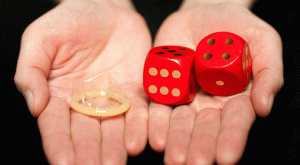
Do middle school students really need to know about Chlamydia?
Unfortunately, in our culture today — and in neighborhoods, and even in our churches — the answer is yes.
There is some good news. In 2015, among U.S. high school students surveyed, 41% had had sexual intercourse.[i] That percentage has been dropping – from 47% in 2013 and 54% in 1991.
However, STDs are at an unprecedented high in the U.S. Half of the nearly 20 million new STDs reported each year were among young people, between the ages of 15 to 24.[ii] Americans ages 15 to 24 years old accounted for nearly two-thirds of chlamydia diagnoses and half of gonorrhea diagnoses.[iii]
We see some of these young people in our clinic – young women who have come in to get tested and treated for STDs. And week after week we meet young women, sometimes very young, who are distraught with the news that they are pregnant.
In the last several weeks, our nurses have been busy giving presentations about sexually transmitted diseases and infections in our local public middle and high schools.
After the presentations, we often hear from a few students who changed their minds about sexual activity after hearing the presentation. These students tell us on their exit surveys, “(Now) I am postponing sex until marriage.”
Surveys we received back from high school students recently indicated that only 13% of students were planning to postpone sex until marriage before they heard the presentation.
Most students, however, indicated things about the fluidity of their plans for becoming sexually active such as, “when I find the right person,” “until college,” “until later,” “when I feel like it,” “when I feel ready” or “when I have someone to trust.”
But given the messages teens are bombarded with every day, these indefinite ideas are not surprising. In the midst of this muddle, we are grateful to be able to present a different message. A “LifeWise” message that values each person for who he or she is. A caring message that plants a seed for a different way of living.
As we celebrate Valentine’s Day and the month of love, we are encouraged that in both classrooms and our clinic, we can equip teens and young adults to make healthy choices. We can help them understand that our culture’s “safer sex,” instead of being “safe,” may equal an STD or a baby – and often emotional regret.

The CDC states, “Abstinence from vaginal, anal, and oral intercourse is the only 100% effective way to prevent HIV, other STDs, and pregnancy. The correct and consistent use of male latex condoms can reduce the risk of STD transmission, including HIV infection. However, no protective method is 100% effective, and condom use cannot guarantee absolute protection against any STD or pregnancy.”[iv]
We can go farther to inspire teens and young adults to choose something better.
We can encourage each young woman that she is valuable, even without physical affection from another. She can decide to postpone sex until she is in a lifelong committed relationship – until her beloved says, “I do…until death do we part.”
And likewise, we can embolden each young man to treat the young woman he is dating like he would want someone to treat his future wife, respect her whole person and postpone sex until marriage.
Young women and young men in our neighborhoods and churches need to know that someone who “loves them” only if they are sexually active is not displaying love at all. They can choose to wait for someone to show real, courageous and self-sacrificial love. Someone who is happy to wait until they are married.
Do we expect one presentation to change every student’s future? Certainly not. But planting one seed at a time, making a difference for even one student who is before us today can make a world of difference for that one in his/her tomorrow.
Happy Valentine’s Day.
[i] https://www.cdc.gov/healthyyouth/sexualbehaviors/, February 13, 2017
[ii] Ibid
[iii] https://www.cdc.gov/nchhstp/newsroom/2016/std-surveillance-report-2015-press-release.html, February 13, 2017
[iv] https://www.cdc.gov/healthyyouth/sexualbehaviors/, February 13, 2017